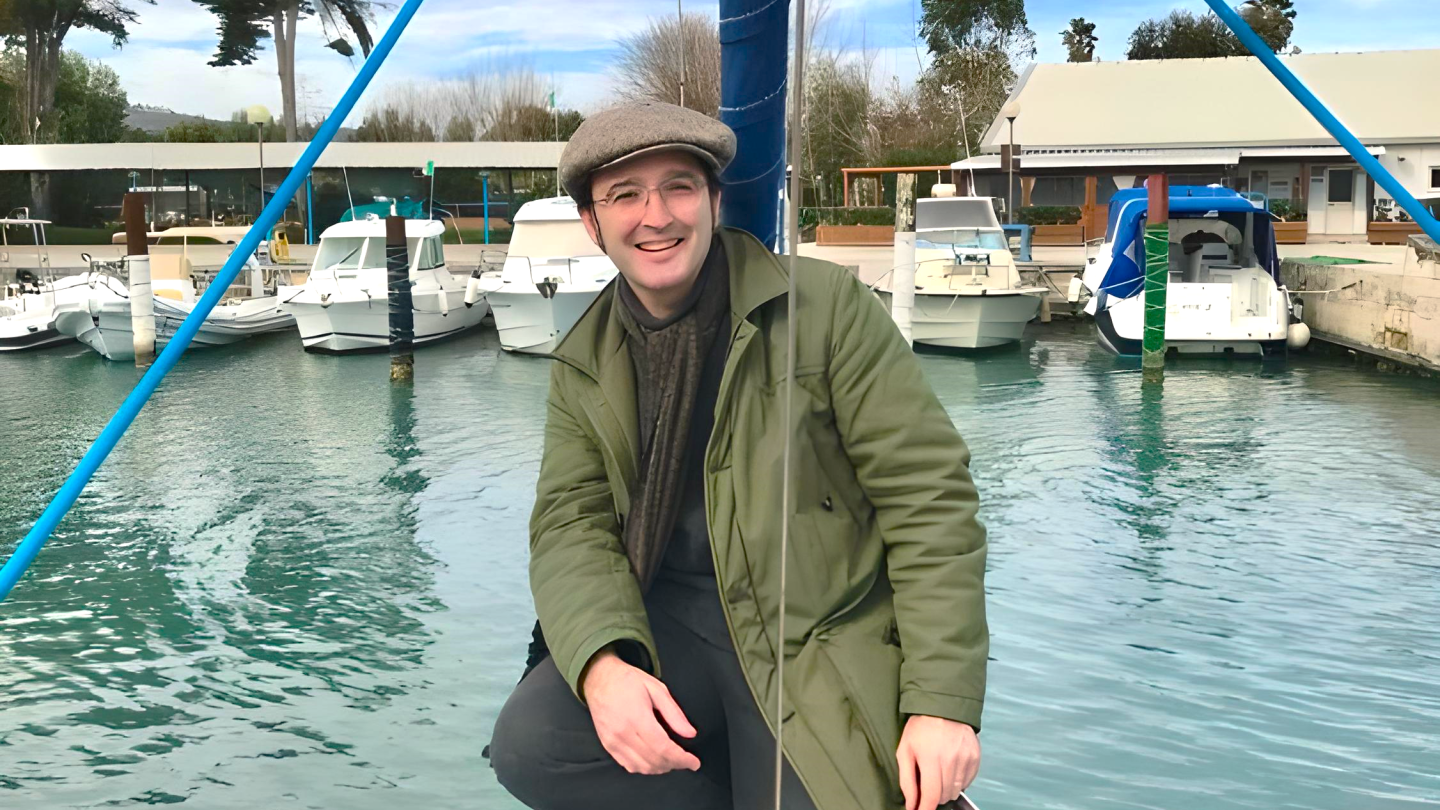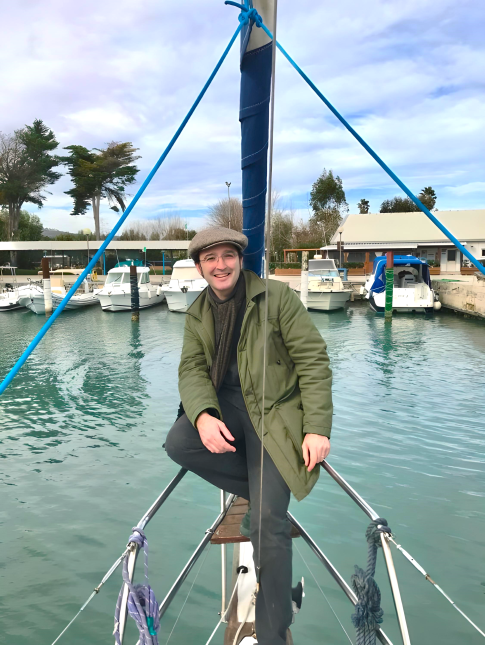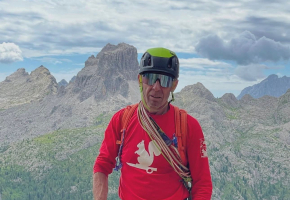
Icons of Italian service
Lorenzo: Venice's best guide - A story of Italian excellence

We recently chatted with Lorenzo, our trusted and most requested guide in Venice! He is a wealthspring of knowledge, perfectly conveying the essence of Italian excellence.
Lorenzo, Tour Guide
Tell us about yourself: when and why did you become a Venice guide?
The path to this profession was rather gradual and it wasn't a calling or a sudden realization. I've always had a strong interest in travel, not just my own but others' too, as often, it's through others that we begin to journey. During my Ph.D. in Language Sciences at Ca' Foscari University, I had the opportunity to coordinate Columbia University's Summer School at Ca' Foscari (Italian Studies) for 3 years. This experience involved organizing both curricular and extracurricular activities, focusing on discovering the territory. This inadvertently introduced me to tourism. I was immediately fascinated by the aspect of public relations, the work of connecting people and services, coordinating and planning to create a well-organized itinerary. This experience made me see Venice as a wonderful opportunity to redirect my professional field and life and from the end of my Ph.D. to obtaining guiding licenses, the transition was quick. What some saw as a triple somersault dive from the outside, I experienced as a rather fluid transition. I soon realized that this profession added value, not only offering economic independence but more importantly the satisfaction of meeting and working with vastly different people and providing them with a meaningful experience in Venice.
In which city do you operate?
I primarily operate in Venice, where I live, in the Santa Croce district, a stone's throw from Rialto, and occasionally in Padua. I also lead food and wine experiences in the Tre Venezie region, spanning from Friuli Venezia Giulia to a large part of the Veneto region and the Dolomites. And I'm not referring only to the vast Prosecco area where there is much more to explore. However, 99% of my activity focuses on Venice and its enchanting lagoon.
Who are your clients?
My clients mainly come from the Anglo-American world, with a strong presence of Americans. I also often work with English clientele, especially with organized groups and school trips, although they are concentrated in certain periods of the year. During the low season, I sometimes cater to individual clients and groups of Italians.
How is it to operate in Venice considering the situation of recent years (massive tourist flows, problems caused by overtourism)? Have you seen your city change since you started working as a guide?
Operating in Venice entails significant challenges. The Acqua Alta (high water) of 1966 undoubtedly contributed to the population decline, leading to a demographic shift between Venice and the mainland of Mestre, with the latter becoming much more populous over a century. However, we know very well that Venice has suffered from a lack of tourism management, as well as social and housing policies. Historic city centers, on the other hand, are gradually emptying everywhere. Here in the lagoon, it's a more massive, evident, and dramatic phenomenon due to the city's nature. Venice's tourist attraction clashes with overtourism, making it difficult to estimate the millions of annual visitors, including numerous daily excursionists. On days of maximum influx, especially on Saturdays, some areas become almost inaccessible due to the crowds. All this has impacted the overall cost of living, including the real estate market, resulting in a housing crisis that has become a chronic problem. Venice hosts around 90,000 commuters daily, confirming the city's economic importance. Managing the balance between tourism and the protection of the local community and environment has become a critical challenge.
Can you share an anecdote that has stayed with you in your years of work?
In 2022, a client passionate about wood sculptures, after visiting Murano and Burano, wanted to acquire colored fragments of glass canes, but since the shops were closed and they had an early morning flight the next day, they politely asked me to purchase them. So, I shipped the material to Arizona, and at Christmas, I received a tiny wooden gondola and Murano granules, a special gift for my granddaughter.
What aspect of your work do you like the most and what is the biggest challenge you have to face?
The job presents many small daily challenges, especially in crowded areas like San Marco, where moving around becomes a challenge. It's unavoidable to traverse it, and sometimes the breathing space between San Marco and Rialto is scarce, and maneuvering a group becomes complicated. Every day I meet different people, and their travel experience relies upon my ability to understand and deliver an unforgettable experience. I enjoy this challenge. Unlike teaching, where there was plenty of time to build bonds with the class, with tourists, I almost bet everything in the first few minutes. The human factor is crucial: as guides, we act as a bridge between the traveler and the place, serving as mediators of experiences.
What does going the extra mile mean to you?
I believe my strength lies in interpreting and enriching itineraries, respecting and enhancing expectations. Managing the itinerary with flexibility is essential: one must understand when it's time to make small changes during a walking tour, stimulating the discovery of city corners commonly overlooked. This happens through active dialogue with the client, attempting to offer unexpected experiences. It's about interpreting and creating a product that considers the "measure" of expectations but is capable of surprising, generating, within limits, a real experience capable of surpassing imagination.

What does going the extra mile mean to you?
It's not just about tailoring a suit but the desire to create a unique and unrepeatable garment, which reveals to the customer, when they start wearing it, an even more extraordinary experience than they had imagined, and perhaps pleasantly surprising.
What is your favorite place in Venice?
My favorite place in Venice, outside the St. Mark's area, is perhaps the Basilica dei Frari. This church encapsulates multiple aspects of the city's spirit, combining religion, politics, art, and history. The basilica offers a fascinating insight into the evolution of Venetian painting up to Tiziano's Assumption, which at the time shocked the Franciscans, and beyond Tiziano. The same goes for sculpture, with great names like Donatello, Sansovino, Vittoria, and the Lombardo, but also with wooden works, often less celebrated, such as Francesco Pianta's Baroque clock or the refined choir of the Cozzi, whose only "problem," so to speak, is being almost overshadowed by framing Tiziano's Assumption on the path to the altar. The large stained glass windows speak of Murano within an impressive Gothic architecture in terms of height, passing through various funerary monuments of the Doges or artists like Tiziano and Canova, offering a complete experience spanning eight centuries.
In terms of sustainability, how do you think we can improve tourism flow in the city of Venice? What attitudes could we adopt to preserve it better?
For a more sustainable Venice, it would be crucial to reevaluate the current tourist approach. Typical short stays (1/2 nights) penalize the city, often experienced only as a checklist of "must-see" attractions. However, Venice requires time to be discovered and understood in its essence, which seems beautifully mired in the splendor of the past but actually speaks of the future of all cities. Longer stays, at least 3 nights, would allow better integration between visitors and the city, reducing the impact of tourist influx, mitigating the effect of "hit and run." Longer stays would also stimulate an offer often fixated on the same itineraries. But this is just one of many aspects.
Here are some good habits to make your stay more eco-friendly and some suggestions to experience Venice authentically: Exploring Venice’s hidden delights with sustainable travel tips.
Related articles
10154
Torino (TO)


